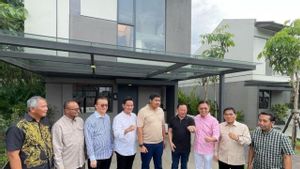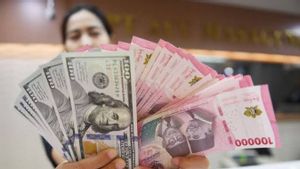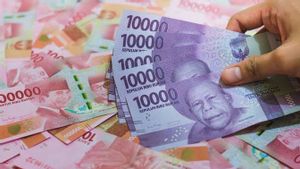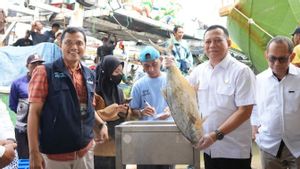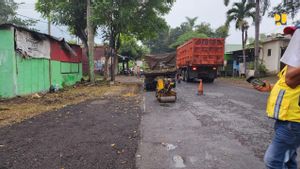PT Pupuk Indonesia (Persero) invites Mitsubishi and Toyo companies from Japan to develop blue and green ammonia in order to reduce carbon emissions by 2030 by 4.8 million tons of CO2 and 20 million tons of CO2 by 2060.
"We are collaborating with a number of parties in the development of blue and green ammonia, one of which is with a company from Japan," said PT Pupuk Indonesia President Director Bakir Pasaman in a statement in Jakarta, quoted from Antara, Thursday, April 13.
It said the company built an ammonia factory in Lhokseumae, Aceh, and the next target was to build a factory in Bontang. Amonia is a chemical compound that can be a source of future clean energy as well as a medium for transporting hydrogen.
Executive Officer/Division Director of Solution Business Toyo Engineering Corp, Eiji Sakata said, his party is ready to help Pupuk Indonesia and the Indonesian government achieve net zero emissions.
This is reflected in the collaboration between PT Pupuk Indonesia (Persero) and Toyo Engineering Corp, which agreed to jointly conduct a joint study on the construction of the Green mainstay factory in Indonesia. The agreement is contained in the Memorandum of Understanding (MoU) on the Joint Development of Pupuk Iskandar Muda (PIM) 2 Hybrid Green sajania.
Indonesia has a strong point to enter the ammonia supply business. So now is the time for transfers to become a sustainable energy company for all Indonesian group companies," he said.
Deputy President Director of Pupuk Indonesia Nugroho Christijanto said that a number of colleagues from Pupuk Indonesia from Japan such as Toyo Engineering Corporation to Mitsui & Co Ltd, already have adequate technology for the development of ammonia.
"So we know that in the future the development of blue and green ammonia will also require more investment than the existing gray ammonia," he said.
Nugroho explained that collaboration with industry players by exchanging products can also overcome common needs. For example, in Indonesia, ammonia can be used as coal fuel or for coal Bollers at PLN so that ammonia will become one of the energy sources in the future and will not only be consumed by industry, but across sectors.
Pupuk Indonesia Marketing Director Gusrizal said that Pupuk Indonesia has had a long experience in the ammonia business, namely since 1950. Pupuk Indonesia built its first ammonia factory in Palembang, South Sumatra.
"I have to say, we (Indonesian fertilizers) are strong players in the ammonia market," said Gusrizal.
Gusrizal said, currently Pupuk Indonesia produces around 7 million tons of ammonia per year. Most of the raw materials are urea and nitrogen, phosphat, potassium (NPK). Pupuk Indonesia still has about 1 million tons per year sold directly to users or final buyers.
In addition, Pupuk Indonesia wants to make Indonesia a hub from the world's ammonia market. However, there are several things that must be done. The first is to build human resources (HR) and to achieve the company's optimal target needs to have reliable human resources.
Second, government support. The government's support in question is incentives. This is because the development of clean ammonia is a form of Pupuk Indonesia's support for the energy transition program from the government to Net Zero Emission in 2060.
The English, Chinese, Japanese, Arabic, and French versions are automatically generated by the AI. So there may still be inaccuracies in translating, please always see Indonesian as our main language. (system supported by DigitalSiber.id)



